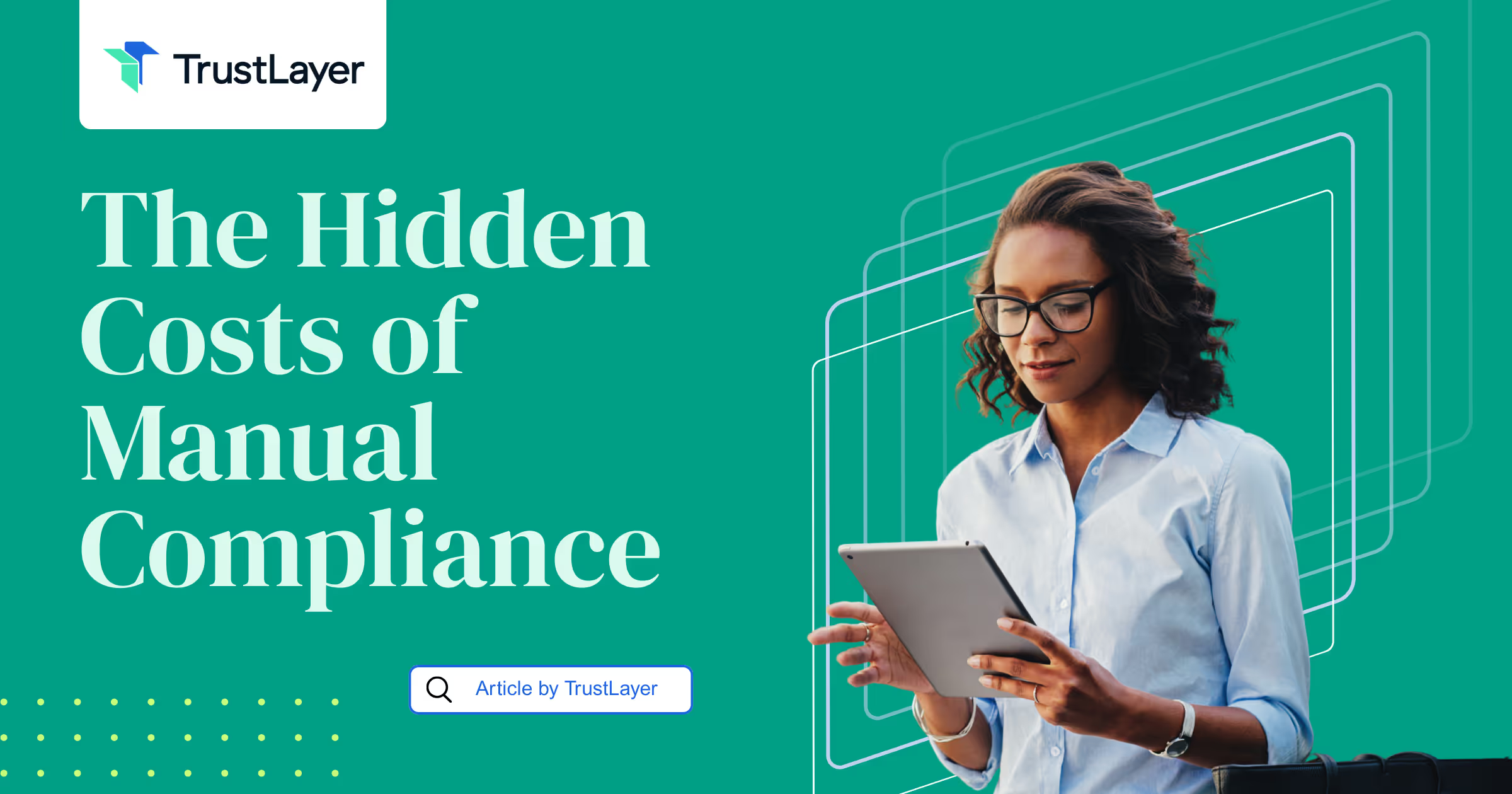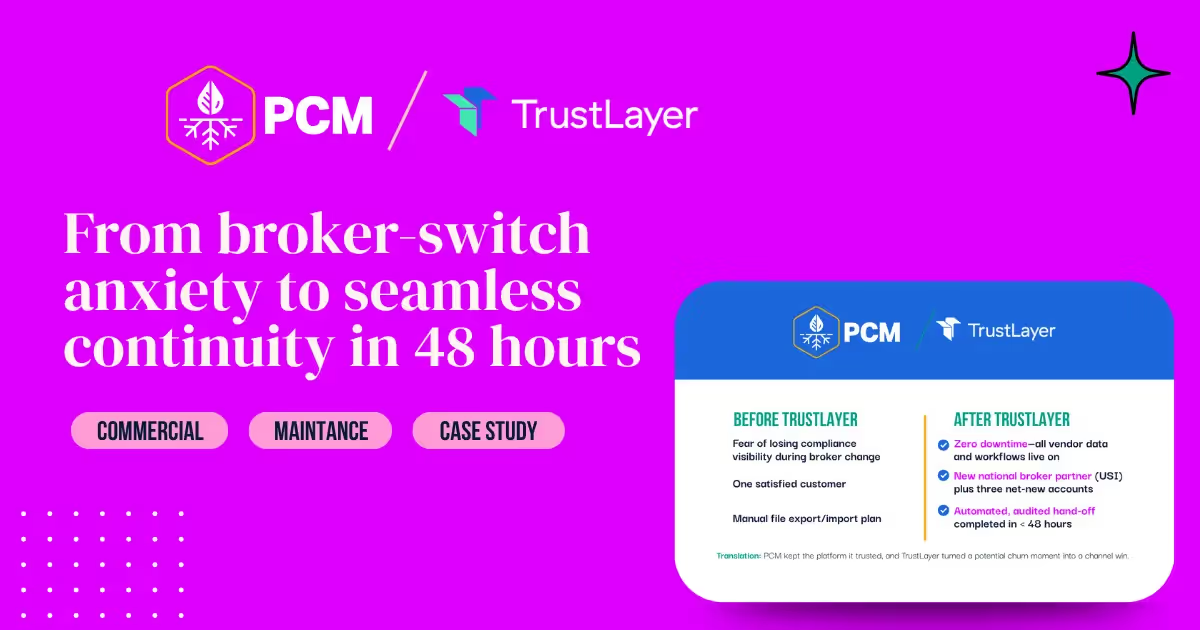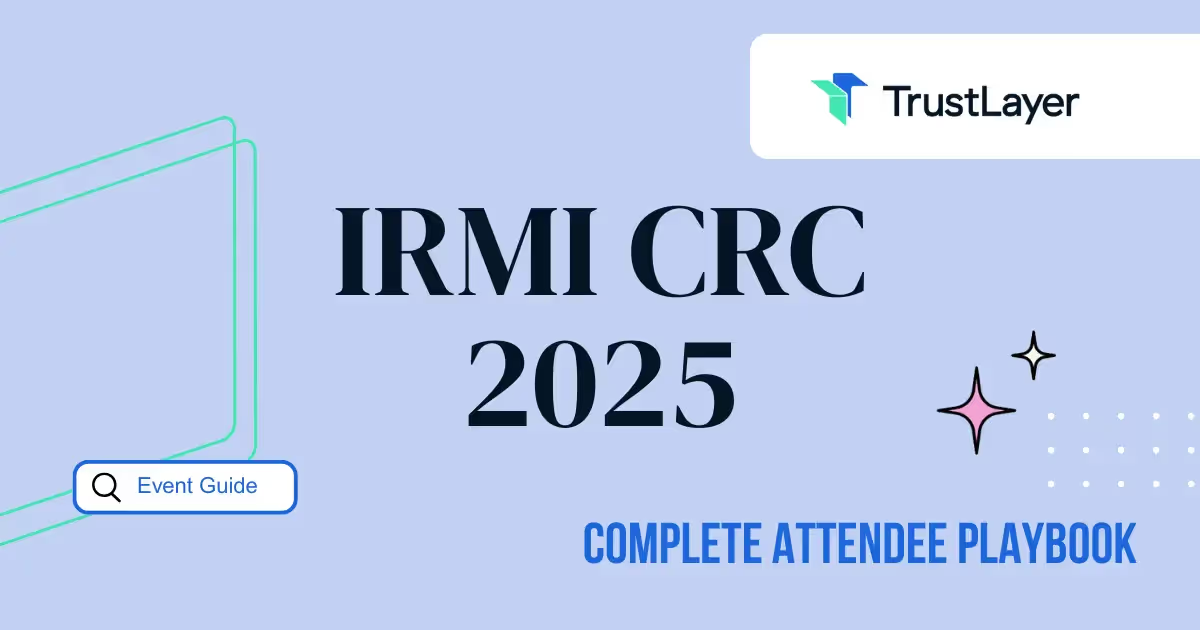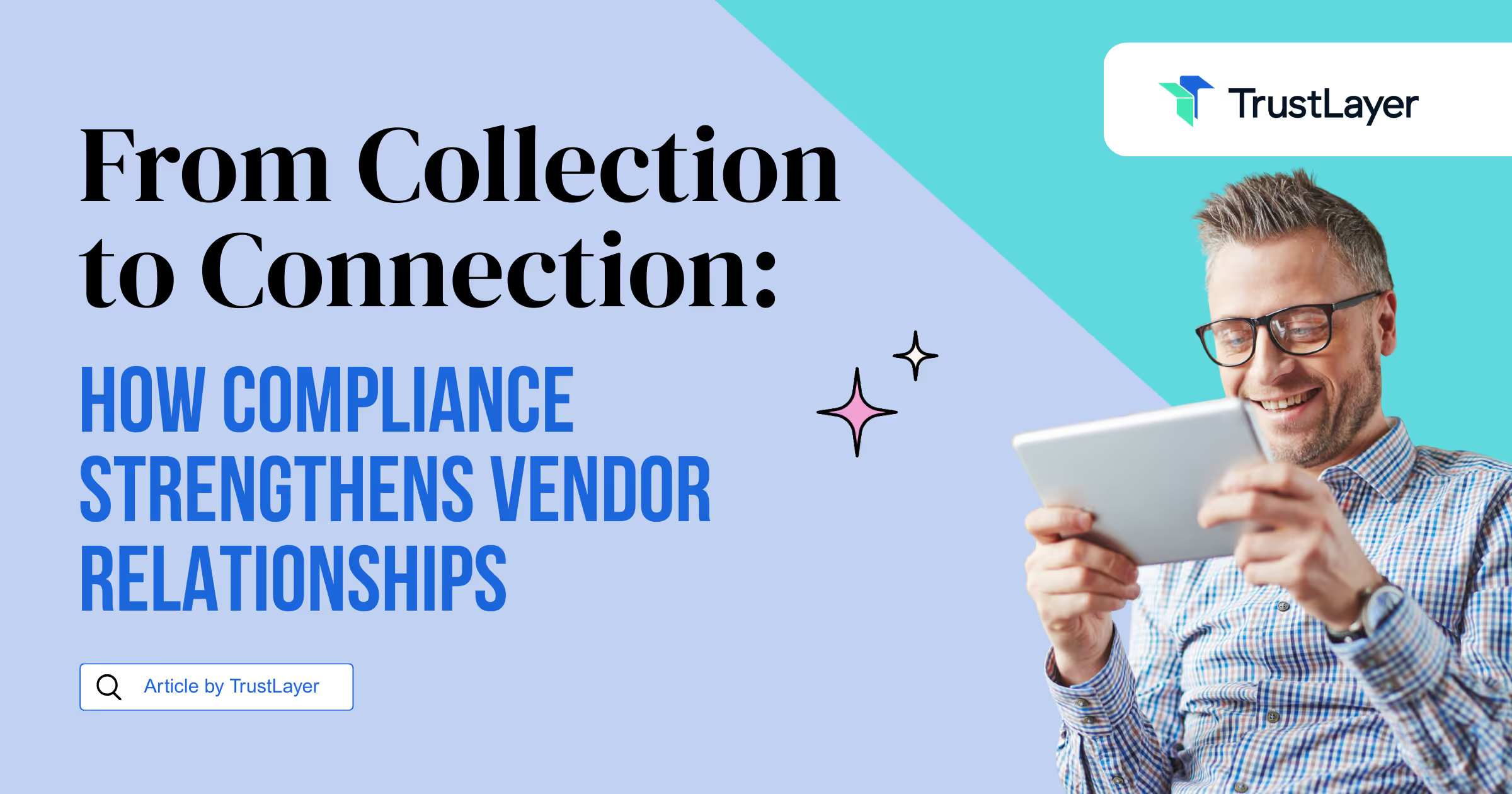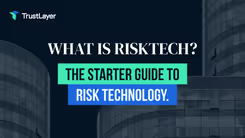Are My Vendors Compliant?

In today’s interconnected business environment, vendor compliance is more than just a checkbox on a procurement form—it’s a critical factor that can make or break your company’s operational integrity, financial health, and reputation. But how can you be sure that the vendors you rely on are truly compliant with the myriad regulations, insurance requirements, and contractual obligations that protect your business?
This article dives deep into the world of vendor compliance, exploring why it matters, how to assess it effectively, and what tools and strategies can help ensure your vendors meet the standards your business demands. Along the way, we’ll highlight key considerations and share insights from licensed insurance professionals at TrustLayer to help you navigate this complex landscape.
Why Vendor Compliance Matters More Than Ever
Vendor compliance isn’t just a bureaucratic hurdle; it’s a cornerstone of risk management. According to a 2023 report by the Risk Management Society (RIMS), over 60% of organizations experienced a compliance-related disruption due to vendor issues in the past two years. These disruptions ranged from delayed projects to costly legal disputes and regulatory fines.
Non-compliance can expose your business to a variety of risks, including:
- Financial penalties: Regulatory bodies like OSHA, GDPR regulators, or the IRS can impose hefty fines if your vendors fail to meet legal standards.
- Operational delays: If a vendor lacks proper insurance coverage or fails to meet safety standards, your projects can stall or even halt entirely.
- Reputational damage: Partnering with vendors who cut corners can tarnish your brand’s reputation, especially in industries like healthcare, finance, or construction.
Ensuring vendor compliance is not just about protecting your company; it’s about safeguarding your customers, employees, and stakeholders from unnecessary risk. The implications of non-compliance extend beyond immediate financial repercussions; they can disrupt supply chains, erode customer trust, and lead to a loss of competitive edge. For instance, a failure to comply with data protection regulations can result in data breaches, which not only incur fines but also lead to long-term damage to customer relationships and loyalty.
Moreover, as businesses increasingly rely on technology and digital solutions, the complexity of vendor relationships grows. This necessitates a more proactive approach to compliance management. Companies are now investing in advanced compliance software and training programs to ensure that all vendors are thoroughly vetted and continuously monitored. By fostering a culture of compliance, organizations can not only mitigate risks but also create a more resilient operational framework that can adapt to evolving regulatory landscapes and market demands.
Understanding the Core Components of Vendor Compliance
Certificate of Insurance (COI) Verification
One of the most critical elements of vendor compliance is verifying the vendor’s insurance coverage through a Certificate of Insurance (COI). A COI provides proof that the vendor has the necessary insurance policies—such as general liability, workers’ compensation, and professional liability—to cover potential risks associated with their work.
However, simply collecting COIs isn’t enough. Many companies discover that their vendors’ insurance policies have gaps, expired coverage, or limits that don’t meet contractual requirements. According to a 2022 survey by the Insurance Information Institute, nearly 40% of businesses reported issues with invalid or insufficient COIs from their vendors.
Licensed insurance professionals at TrustLayer emphasize the importance of not only obtaining COIs but also thoroughly reviewing them to confirm that coverage aligns with your risk tolerance and contractual obligations. It’s also advisable to establish a regular review process for COIs to ensure that they remain valid and sufficient over time. This proactive approach can mitigate risks and foster a more secure partnership with your vendors.
Regulatory and Contractual Compliance
Beyond insurance, vendors must comply with relevant laws and contractual terms. This can include adherence to data privacy laws like GDPR or CCPA, environmental regulations, labor laws, and industry-specific standards.
For example, a vendor handling sensitive customer data must demonstrate compliance with cybersecurity requirements and data protection standards. Similarly, construction vendors need to meet OSHA safety regulations to prevent workplace accidents. Non-compliance in these areas can lead not only to legal repercussions but also to significant financial liabilities and damage to your brand’s reputation.
Contractual compliance also involves meeting deadlines, delivering quality work, and maintaining ethical business practices. Failure to comply can lead to breach of contract, financial penalties, or termination of the vendor relationship. Establishing clear communication channels and performance metrics can help ensure that both parties are aligned and accountable throughout the duration of the contract.
Financial Stability and Ethical Practices
Vendor compliance also extends to financial health and ethical conduct. A vendor struggling financially might cut corners or fail to fulfill obligations, putting your projects at risk. Ethical concerns, such as labor violations or corruption, can also have severe repercussions for your company’s reputation and legal standing.
Performing due diligence through credit checks, background screening, and ethical audits can help you identify potential red flags before entering into agreements. Additionally, fostering open dialogue with vendors about their business practices and financial health can create a more transparent relationship. This not only helps in assessing their reliability but also encourages vendors to maintain high standards, knowing that they are being monitored and evaluated.
Furthermore, engaging with vendors who prioritize corporate social responsibility (CSR) can enhance your brand image and align with consumer expectations. Many customers today prefer to support businesses that demonstrate ethical practices and sustainability. By choosing vendors who share these values, you not only mitigate risks but also contribute to a more responsible supply chain.
```
How to Assess Vendor Compliance Effectively
Developing a Clear Compliance Framework
Establishing a comprehensive vendor compliance framework is the first step toward effective management. This framework should outline the specific compliance requirements relevant to your industry and business model, including:
- Insurance coverage minimums and COI requirements
- Regulatory standards and certifications
- Contractual obligations and performance metrics
- Financial and ethical standards
Having these criteria clearly documented helps streamline vendor evaluations and ensures consistency across the board. Furthermore, it is essential to engage stakeholders from various departments, such as legal, finance, and operations, to ensure that the framework is comprehensive and reflects the diverse needs of the organization. Regularly revisiting and updating this framework in response to changes in regulations or business objectives will also help maintain its relevance and effectiveness.
Regular Audits and Continuous Monitoring
Compliance isn’t a one-time checkmark; it requires ongoing monitoring. Regular audits—whether quarterly, biannually, or annually—help verify that vendors maintain their compliance status over time. These audits can also serve as a valuable opportunity to foster stronger relationships with vendors by discussing improvements and best practices.
Technology can assist here, but human expertise remains invaluable. Licensed insurance professionals at TrustLayer recommend combining automated COI tracking with expert reviews to catch discrepancies early and reduce administrative burdens. Additionally, utilizing data analytics can provide insights into vendor performance trends, enabling proactive adjustments to compliance strategies before issues arise.
Leveraging Vendor Risk Assessments
Conducting thorough risk assessments for each vendor allows you to prioritize compliance efforts based on potential impact. High-risk vendors—such as those involved in hazardous work or handling sensitive data—should be subject to more rigorous scrutiny. This targeted approach not only conserves resources but also enhances the overall integrity of your supply chain.
Risk assessments typically evaluate factors like the vendor’s industry, scope of work, past compliance history, and financial health. Additionally, it is beneficial to assess the vendor's reputation within the industry, including any past legal issues or negative press that could pose a risk to your organization. By integrating qualitative assessments with quantitative data, you can create a more holistic view of vendor risk, allowing for informed decision-making that aligns with your organization's risk appetite and strategic goals.
Common Challenges in Vendor Compliance and How to Overcome Them
Inconsistent Documentation and Expired COIs
One of the most frequent headaches in vendor compliance is managing inconsistent or outdated documentation. Vendors may submit COIs that are expired, incomplete, or don’t reflect the correct coverage limits.
To combat this, companies should implement a centralized system for document collection and renewal reminders. TrustLayer’s licensed insurance professionals highlight the importance of proactive communication with vendors to ensure timely updates and prevent coverage lapses. Additionally, utilizing technology such as automated tracking systems can streamline the documentation process. These systems can send alerts to both the vendor and the compliance team when documents are nearing expiration, ensuring that all parties are aware of upcoming deadlines. This not only reduces the administrative burden but also enhances accountability among vendors, fostering a culture of compliance.
Complex Regulatory Environments
With regulations evolving rapidly—especially in areas like data privacy and environmental compliance—keeping up can be daunting. Vendors operating across different states or countries may face varying requirements, complicating compliance efforts.
Staying informed through industry associations, regulatory updates, and expert consultations is essential. Partnering with knowledgeable professionals can help interpret complex rules and apply them appropriately to your vendor relationships. Furthermore, investing in compliance management software can provide a comprehensive overview of regulatory requirements tailored to specific jurisdictions. These platforms often include features such as real-time updates on regulatory changes, which can help organizations adjust their compliance strategies swiftly. By fostering a culture of continuous learning and adaptation, companies can better navigate the complexities of vendor compliance and mitigate potential risks.
Balancing Compliance with Vendor Relationships
Strict compliance demands can sometimes strain vendor relationships, especially with smaller suppliers who may lack resources to meet all requirements immediately.
Building collaborative partnerships and offering support—such as sharing compliance resources or providing training—can foster goodwill and improve compliance outcomes. Remember, the goal is a mutually beneficial relationship that protects both parties. Additionally, establishing clear communication channels can facilitate discussions around compliance challenges vendors may face. Regular check-ins and feedback sessions can help identify areas where vendors need assistance and allow companies to tailor their support accordingly. This proactive approach not only strengthens vendor relationships but also enhances overall compliance, as vendors feel more empowered and equipped to meet the necessary standards.
Best Practices for Maintaining Vendor Compliance
Centralize Vendor Information and Documentation
Maintaining a single source of truth for all vendor compliance documents simplifies management and reduces errors. Centralized platforms enable easier tracking of COIs, contracts, certifications, and audit results. This not only enhances efficiency but also provides a comprehensive overview of vendor compliance status at any given moment, allowing organizations to make informed decisions quickly.
While technology can streamline this process, the involvement of licensed insurance professionals ensures that documents are not only collected but also thoroughly vetted for accuracy and adequacy. These professionals can provide insights into potential risks associated with vendor relationships, helping organizations mitigate exposure to liability. Furthermore, regular audits of the centralized documentation system can uncover discrepancies and ensure that all records are up to date, thereby reinforcing the integrity of the compliance process.
Establish Clear Communication Channels
Transparent and consistent communication with vendors about compliance expectations, deadlines, and updates is crucial. Regular check-ins and feedback loops help identify issues early and foster accountability. Utilizing collaborative tools and platforms can facilitate real-time communication, ensuring that both parties are aligned on compliance requirements and any changes that may arise.
Additionally, creating a structured communication plan that outlines the frequency and format of updates can enhance relationships with vendors. This plan might include scheduled meetings, newsletters, or compliance bulletins that keep all stakeholders informed. By encouraging open dialogue, organizations can cultivate a culture of compliance that encourages vendors to proactively address potential issues before they escalate.
Train Internal Teams on Compliance Requirements
Ensuring that procurement, legal, and risk management teams understand compliance standards enables them to enforce policies effectively. Training programs and workshops can keep staff updated on evolving regulations and best practices. Tailoring these training sessions to specific roles within the organization can enhance relevance and engagement, ensuring that all team members grasp the importance of compliance in their daily operations.
Moreover, incorporating real-world scenarios and case studies into training can provide practical insights into the consequences of non-compliance. This approach not only reinforces the significance of adhering to regulations but also empowers employees to recognize and address compliance-related challenges as they arise. By fostering a knowledgeable workforce, organizations can significantly reduce the risk of compliance breaches and enhance their overall vendor management strategy.
When to Seek Expert Help
Vendor compliance can quickly become overwhelming, especially for organizations managing large vendor portfolios or operating in highly regulated industries. Engaging licensed insurance professionals, like those at TrustLayer, can provide invaluable guidance.
Experts can assist in interpreting insurance policies, verifying COIs, and advising on risk mitigation strategies. Their expertise helps you avoid costly mistakes and ensures that your vendor compliance program is robust and reliable.
Conclusion: Taking Control of Vendor Compliance
Ensuring your vendors are compliant is a critical component of protecting your business from financial, operational, and reputational risks. By understanding the core elements of compliance—insurance verification, regulatory adherence, financial stability, and ethical conduct—you can build a strong foundation for vendor management.
Implementing a clear compliance framework, conducting regular audits, and leveraging expert advice are key steps toward maintaining vendor integrity. While challenges exist, proactive strategies and collaborative relationships with vendors can turn compliance from a burden into a competitive advantage.
For those looking to deepen their understanding of vendor compliance and risk management, exploring other insightful articles from TrustLayer is a great next step. Additionally, booking a consultation with TrustLayer’s licensed insurance professionals can provide personalized support tailored to your business needs.
Ready to transform your vendor compliance process and embrace the future of risk management? TrustLayer is here to revolutionize the way you track and verify certificates of insurance, alleviating the administrative burden and saving you time and money. Our industry-leading solution, developed in collaboration with carriers, brokers, and businesses, is designed for the modern risk manager who values efficiency and accuracy. Don't let outdated methods hold you back. Set up a time to talk with our team and discover how TrustLayer can streamline your compliance workflow and help you take control of your vendor relationships with confidence.





